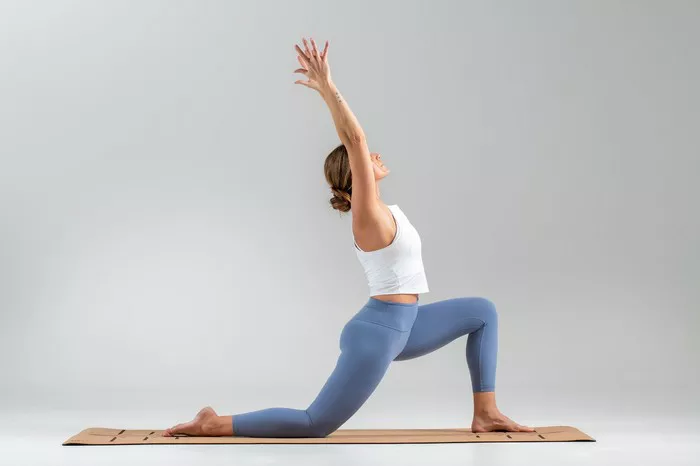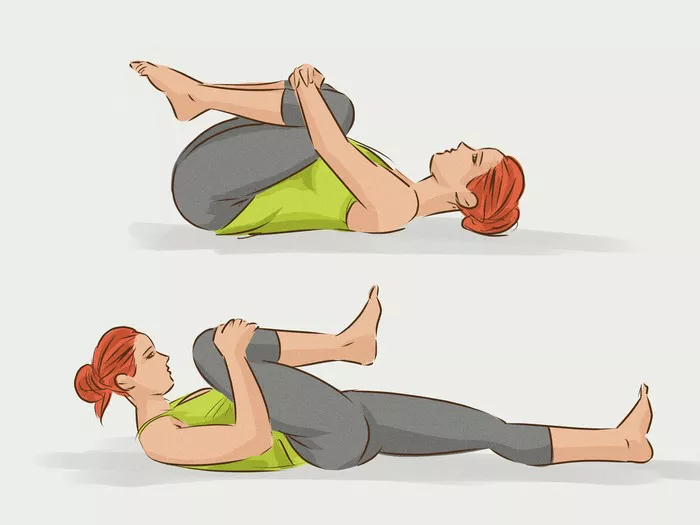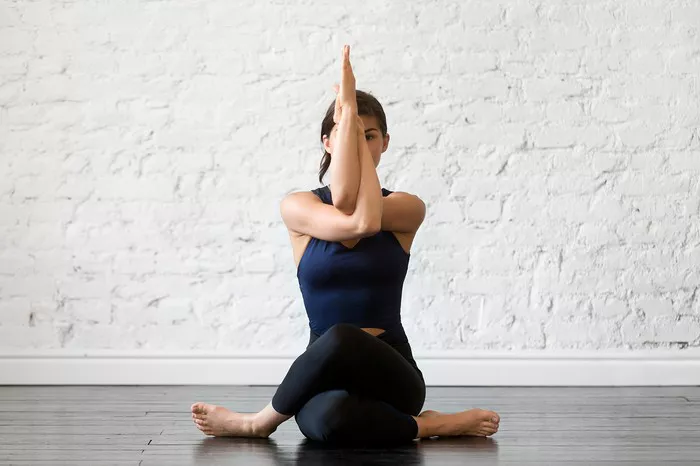In the vast world of yoga, each pose carries its own unique essence, offering a plethora of benefits to the practitioner. Among these, the low lunge pose, also known as Anjaneyasana in Sanskrit, stands out as a fundamental posture with profound physical and mental advantages. Whether you’re a seasoned yogi or a beginner embarking on your journey to wellness, integrating the low lunge into your practice can yield transformative results.
Pose Basics
Sanskrit Name: Anjaneyasana
Other Names: Low Lunge, Crescent Lunge
Type of Pose: Standing, Hip Opener
Difficulty Level: Beginner
Benefits
The low lunge pose encompasses a myriad of benefits that extend beyond the physical realm, touching upon the holistic well-being of the practitioner.
1. Stretches the Hips, Quads, and Groin:
One of the primary benefits of Anjaneyasana is its ability to deeply stretch and open the hips, quadriceps, and groin region. In today’s sedentary lifestyle, where prolonged sitting has become the norm, the hip flexors tend to tighten, leading to discomfort and restricted movement. Low lunge offers a rejuvenating stretch, releasing tension accumulated from hours of sitting and promoting greater flexibility in the hip flexors and surrounding muscles.
2. Strengthens the Legs and Core:
Engaging in low lunge regularly contributes to the strengthening of the legs, particularly the quadriceps and hamstrings, as well as the muscles of the core. As you lower into the pose, the front leg bears the weight of the body, thereby toning and building strength in the muscles of the thigh. Simultaneously, maintaining stability in the core supports proper alignment and enhances overall strength and balance.
3. Improves Balance and Flexibility:
Balancing poses, such as low lunge, serve as excellent tools for enhancing proprioception and balance. By grounding through the feet and actively engaging the stabilizing muscles, practitioners refine their sense of equilibrium over time. Furthermore, the dynamic nature of Anjaneyasana encourages fluid movement and exploration, gradually increasing flexibility and range of motion in the body.
4. Opens the Chest and Shoulders:
In addition to its lower body benefits, low lunge also facilitates the opening of the chest and shoulders, counteracting the effects of slouching and rounded posture. By extending the arms overhead and lifting through the chest, practitioners create space in the front body, promoting better alignment and respiratory function. This expansive quality cultivates a sense of openness and receptivity, both physically and energetically.
5. Calming for the Mind:
As with many yoga poses, the low lunge offers a gateway to tranquility and inner peace. Through mindful breath awareness and gentle movement, practitioners can soothe the nervous system, alleviating stress and anxiety. The grounding nature of the pose fosters a sense of rootedness and stability, allowing for greater presence and mental clarity.
Step-by-Step Instructions
Now that we’ve explored the myriad benefits of Anjaneyasana, let’s delve into the step-by-step instructions for practicing this rejuvenating pose.
1. Starting Position:
Begin in a standing position at the top of your mat, with feet hip-width apart and arms relaxed by your sides. Take a moment to connect with your breath, cultivating a sense of presence and awareness.
2. Transition to Downward-Facing Dog:
On an exhale, hinge at the hips and fold forward, placing your hands on the mat shoulder-width apart. Step back with your right foot, coming into a plank position.
3. Lower the Right Knee:
From plank, gently lower your right knee to the mat, positioning it directly beneath your right hip. The top of your right foot rests on the mat, with toes untucked.
4. Extend the Left Leg:
Slide your left foot forward, bringing it between your hands. Ensure that your left knee is stacked directly above your left ankle, forming a 90-degree angle.
5. Engage the Core and Hips:
Activate your core muscles by drawing your navel towards your spine, creating a stable foundation for the pose. Engage the muscles of the hips and thighs, firming the legs and maintaining integrity in the posture.
6. Lift Through the Torso:
On an inhale, lengthen through the spine and lift your torso upright, stacking your shoulders over your hips. Keep your gaze forward, maintaining a soft and steady drishti (focused gaze).
7. Reach Arms Skyward:
As you settle into the pose, extend your arms overhead, palms facing each other. Keep the shoulders relaxed away from the ears, finding space across the chest and shoulders.
8. Relax the Shoulders:
Take a moment to soften any tension in the shoulders, allowing them to descend away from the ears. Feel a gentle opening across the front of the body as you broaden through the collarbones.
9. Breathe Deeply:
Remain in the low lunge pose for several breaths, inhaling deeply through the nose and exhaling fully through the mouth. Allow each breath to create expansion and release within the body, deepening into the stretch with each exhale.
Modifications and Variations
While low lunge offers a multitude of benefits, it’s essential to honor your body’s unique needs and limitations. Here are some modifications and variations to tailor the pose to your individual practice:
1. Knee Support:
If you experience discomfort or strain in the knees, place a folded blanket or cushion beneath the kneeling knee for added support and cushioning.
2. Block Under Hands:
For practitioners with limited flexibility or range of motion, place a yoga block beneath your hands on either side of the front foot. This can help alleviate pressure on the wrists and create space in the upper body.
3. Elevated Arms:
To deepen the stretch and increase the opening in the chest and shoulders, interlace your fingers and extend your arms overhead, lifting the gaze towards the sky.
4. Crescent Lunge Variation:
For a more dynamic variation of the pose, lift the back knee off the mat and straighten the back leg, coming into a high lunge position. Keep the front knee stacked over the ankle and engage the core for stability.
Common Misalignments and How to Avoid Them
As with any yoga pose, proper alignment is key to reaping the full benefits of Anjaneyasana while minimizing the risk of injury. Here are some common misalignments to be mindful of:
1. Collapsing Into the Front Knee:
Avoid allowing the front knee to collapse inward or extend past the ankle. Instead, engage the muscles of the thighs and hips to maintain a stable and supported position.
2. Sinking into the Lower Back:
Avoid overarching the lower back or sinking into the hips. Focus on lengthening through the spine and engaging the core muscles to support the torso.
3. Rounded Shoulders:
Avoid hunching or rounding the shoulders forward. Instead, draw the shoulder blades down and back, creating space across the chest and maintaining an open heart center.
4. Straining the Neck:
Avoid tensing or straining the neck by keeping the gaze soft and the neck aligned with the spine. Find a focal point slightly ahead of you to help maintain balance and stability.
Conclusion
Incorporating the low lunge pose, or Anjaneyasana, into your yoga practice can be a transformative journey towards greater physical, mental, and emotional well-being. By embracing its myriad benefits and honoring your body’s unique needs, you can cultivate strength, flexibility, and inner peace with each mindful breath and movement. Whether you’re seeking to release tension in the hips, build strength in the legs, or simply find moments of stillness amidst the chaos of daily life, low lunge offers a sanctuary for self-discovery and growth. As you continue to explore this foundational pose, may you find grace, balance, and resilience both on and off the mat.















